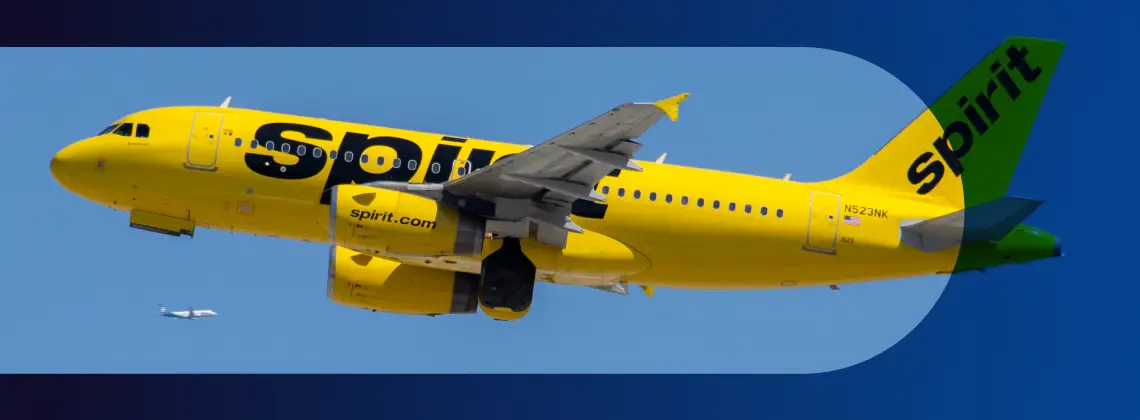News analysis
What happened to Spirit Airlines?

What happened to Spirit Airlines, a corporate governance education analysis of a major US carrier and how its fortunes have declined towards bankruptcy.
Spirit Airlines is one the best-known low-cost carriers in the United States, but this week, news surfaced that it has filed for bankruptcy protection and promised a significant restructuring.
What’s clear is that this isn’t sudden; it’s the result of several years of challenging markets. Do governance failings play a part, too? Let’s get into the details.
What happened to Spirit Airlines: the details
Spirit Airlines never recovered from the turbulent COVID-19 pandemic. To adapt to the changing market and remain stable, the company tried to pursue mergers with other US low-cost carriers, such as Frontier Airlines and JetBlue Airways.
The merger with JetBlue went further to completion but was blocked by a federal judge on anti-trust grounds.
In 2024, while scrambling for a new recovery strategy, the company experienced heavy losses, and its stock value plummeted 90%. It filed for Chapter 11 bankruptcy in November, promising to maintain operations and restructure operations in 2025.
Why was it such a challenge for Spirit Airlines to recover post-pandemic?
Spirit’s official reasons for announcing bankruptcy proceedings were the failed merger project, rising debt, increased competition, and operation challenges.
The merger would have offered the company a lifeline, and having that opportunity taken away was a severe financial blow. Meanwhile, the company has had to deal with additional struggles compounding together to form a hostile business environment.
Trouble with its engine manufacturers has forced it to ground planes and drive up costs. Seat availability remains high, but demand has decreased as people look to save money amid a cost-of-living crisis or pay more for legacy carriers’ increased comfort options.
The latter problems are not unique to Spirit; they are widespread issues affecting the American low-cost carrier industry.
Another low-cost carrier, Southwest Airlines, has also struggled post-pandemic. While some of the reasons, such as activist pressure and tech vulnerabilities, are unique to that airline, other issues, such as a slump in value driven by decreased demand, are similar to Spirit.
What should we take from this?
There is a governance issue at the heart of these troubles for Spirit Airlines, and that is the responsibility to think long-term and adapt to a changing market.
Since the pandemic, it has become clear that multiple US low-cost carriers simply haven’t done that to satisfactory standards.
Spirit’s business model would have reaped huge rewards in the 90s, 00s, and 10s, as it allowed people to move away from traditional, pricier airfares and follow a no-frills approach, not paying for anything that they don’t strictly need, like checked baggage, hand baggage, and seat selection.
It worked for decades; it’s just not working now.
This is always expected in business. Even the most profitable models will eventually run into roadblocks. Rules change, consumer sentiment shifts and investor priorities evolve—all classic features of a developing market. The challenge in governance is to alter corporate strategy to reflect this.
This involves assessing the damage that something like COVID could cause, revising projections around future growth, resetting goals and ensuring your company has the resources to reach them.
One of the main stumbling blocks in this task is that the board can quickly fail to think outside the box. The pandemic may have altered the playing field significantly, but the board—often fed somewhat by groupthink and anchored to remedies that worked in the past—simply doesn’t grasp the scale of that change. As a result, directors don’t ask the right questions or acknowledge the new challenges ahead until it’s too late.
So, did Spirit fail in this core governance duty?
It’s not as black and white as that, and we mustn’t blame corporate leaders at Spirit entirely. After all, the airline’s problems stem from a once-in-a-lifetime global catastrophe in which Spirit’s board and executives had no experience.
It wasn’t even the pandemic itself that struck a fatal blow; it was the slower, more prolonged aftereffects. Spirit’s leaders had the responsibility to analyse this to the best of their ability, but without a relevant example to reference, there was always going to be a certain amount of planning in the dark.
The company also—rightly or wrongly—put a lot of faith in the prospect of a merger. This is fine if it works. But now that it hasn’t, it begs the question of whether the airline had the right legal advice to put so many eggs in one basket or whether it acted on blind faith.
The key takeaway
The most important thing for any business that has survived a crisis like COVID-19 is to determine how much the crisis has changed the market in the medium term. Things might be “back to normal”, but how new will that “normal” be?
From this, the key challenge is to question corporate strategy thoroughly enough to make the necessary changes. This is one of the most difficult tasks in governance, but it is the core of organisational resilience—it’s what defines the best companies.
What happened to Spirit Airlines – The Corporate Governance Institute
Insights on leadership
Want more insights like this? Sign up for our newsletter and receive weekly insights into the vibrant worlds of corporate governance and business leadership. Stay relevant. Keep informed.

